In a 1965 statement entitled ‘Art, Religiosity, Space-Time’, the Brazilian artist Lygia Clark asserted: ‘Art is not bourgeois mystification. What has changed is the form of communicating the proposition. It’s you who now give expression to my thoughts, to draw from them whatever vital experience you want.’ The works gathered at Alison Jacques Gallery predate this statement, ranging from 1951 to 1959, but even at this stage, when Clark used traditional materials like paint, gouache and graphite, her works evince the spirit of experimentation that would infuse her later participatory and sensorial collaborations.
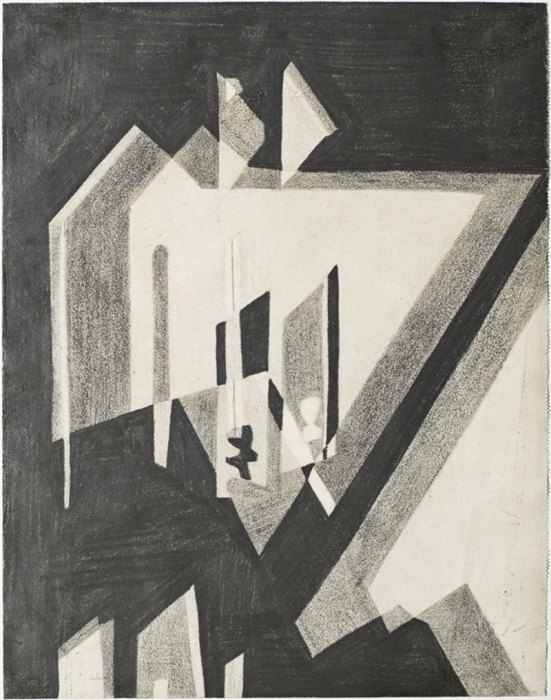
Sem titulo (1952), Lygia Clark. Courtesy Alison Jacques Gallery, London. Copyright O Mundo de Lygia Clark-Associação Cultural, Rio de Janeiro. Photo Michael Brzezinski
The drawings and paintings on display in ‘Lygia Clark: Works from the 1950s’ both emerged from, and directly contributed to, the socio-cultural dynamism of 1950s Brazil. This decade saw the country’s capital change from Rio de Janeiro to the new planned city of Brasilia, its gleaming modernist buildings rising from what had been an empty plain in the heart of Brazil during a mere four years of rapid construction from 1956 and 1960. Artistically, it was a period of intense and sometimes short-lived, but stimulating allegiances, groups and manifestos. Clark participated in Grupo Frente, a collection of artists who engaged with European constructivism, but increasingly embraced colour, dynamism and vitality. By the end of the decade, Clark was ready to sign her name to the 1959 neo-concrete manifesto, which marked a definitive break with the mathematical geometries of concrete art and prioritised physical experiences.
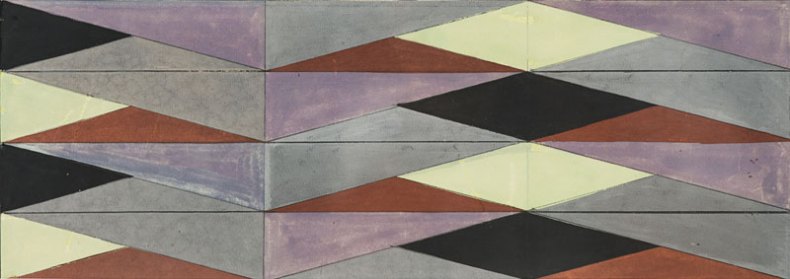
Superficie Modulada (1956), Lygia Clark. Courtesy Alison Jacques Gallery, London. Copyright O Mundo de Lygia Clark-Associação Cultural, Rio de Janeiro. Photo Michael Brzezinski
Some of the most appealing works at Alison Jacques Gallery resonate with both Brazil’s modernising ethos, and with the playful interrogation of constructivism that would culminate in neo-concretism. In Superficie Modulada (1956), made with graphite and gouache on paper, a series of intersecting lines creates a pattern whereby triangles in variegated shades of purple and pink jostle around a spine of black and white diamonds, like the design of a backgammon board. This might feel like a rather throwaway comparison, but the shapes vie engagingly for attention, dancing in front of the eye as if demanding that the viewer join the game. Playfulness can also be found in drawings such as Sem titulo (1952), in graphite pencil. This doodle-like work sees Clark exploring physical and negative space, dividing up the surface of her paper into a series of interlocking zones through the use of line, and then experimenting with the effects of foregrounding and recession through shading.
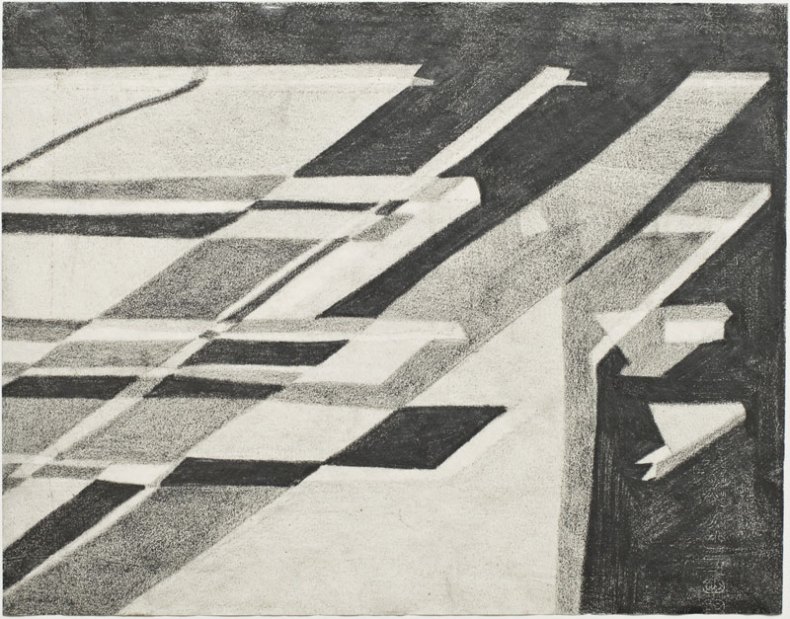
Sem titulo (1952), Lygia Clark. Courtesy Alison Jacques Gallery, London. Copyright O Mundo de Lygia Clark-Associação Cultural, Rio de Janeiro. Photo Michael Brzezinski
Experimentalism also informed Clark’s movement outwards from the flat plane into the three-dimensional realm, including small maquettes for architectural designs. Three are included in the show, all from 1955, for which Clark transposed the blocks of bright colour that she and her peers were experimenting with in their drawings and prints onto the surfaces of walls and furniture. While they might now feel a little overshadowed by the later fate of modernist design, they can also be read as an attempt to make the ideas powering Clark’s artistic production relevant to a wider audience, and to integrate them with lived experience. These pieces in particular feel inscribed with a rich history of ideas, both conceptually and literally: on the back of Maquete para Interior no. 1 (1955) is a yellowed, faded sticker from Grupo Frente’s 1955 exhibition at the Museu de Arte Moderna (MAM) in Rio.
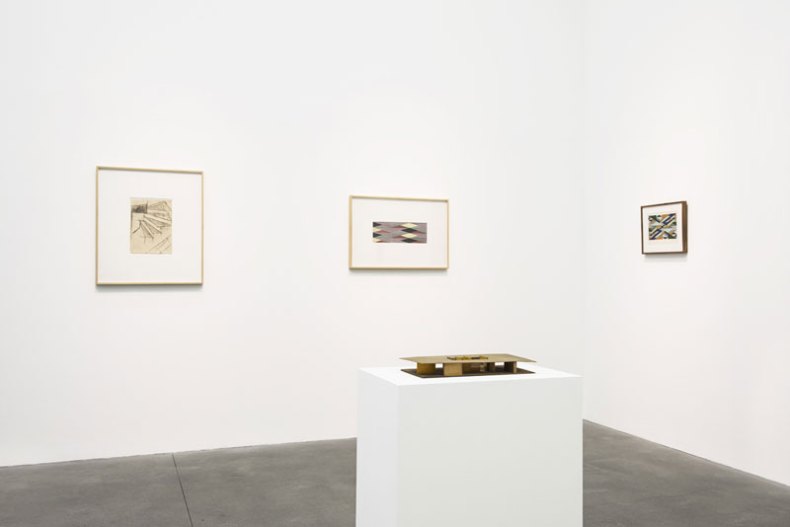
Installation view of ‘Lygia Clark: Work from the 1950s’ at Alison Jacques Gallery, London. Courtesy Alison Jacques Gallery, London. Copyright O Mundo de Lygia Clark-Associação Cultural, Rio de Janeiro. Photo Michael Brzezinski
The latest works on show point in the direction that would ultimately lead to Clark’s ‘abandonment of art’ and her shift into work as a therapist. One of Clark’s aluminium ‘bichos’, Bicho Caranguejo (1959), is presented alongside its study made from adhesive tape, balsa wood and graphite. The study lies flat, its serrated folds reminiscent of the ‘salt cellars’ that were all the rage at primary school, made by folding and refolding a sheet of paper into a series of triangles, which you then slotted your fingers into and manipulated like a kind of beak or claw. The adhesive tape, with its red biro notations, looks tenderly friable. In this respect, the study somehow retains the kind of animal life (the Portuguese word ‘bicho’ has been variously translated into English as ‘beast’, ‘creature’ or ‘critter’) that Clark wanted for the final structures. Caged as they often now are behind protective Perspex, the aluminium ‘bichos’ always look to my mind a little crystallised and cruel, even though they were intended by Clark to be handled and moved by the viewer.
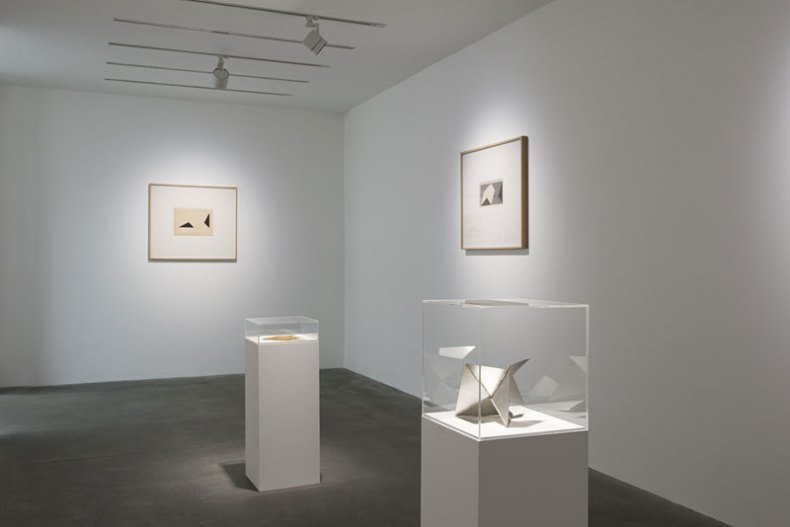
Installation view of ‘Lygia Clark: Work from the 1950s’ at Alison Jacques Gallery, London. Courtesy Alison Jacques Gallery, London. Copyright O Mundo de Lygia Clark-Associação Cultural, Rio de Janeiro. Photo Michael Brzezinski
Larger shows have filled museums and galleries worldwide with Clark’s work recently, such as the Museum of Modern Art’s ‘Lygia Clark: The Abandonment of Art, 1948–1988’ (2014). This is, of course, a much smaller and self-contained exhibit, but as ever with Clark, the level of inventiveness and engagement that runs through her practice makes for a rich viewing experience.
‘Lygia Clark: Work from the 1950s’ is at Alison Jacques Gallery, London, until 30 July.
Unlimited access from just $16 every 3 months
Subscribe to get unlimited and exclusive access to the top art stories, interviews and exhibition reviews.

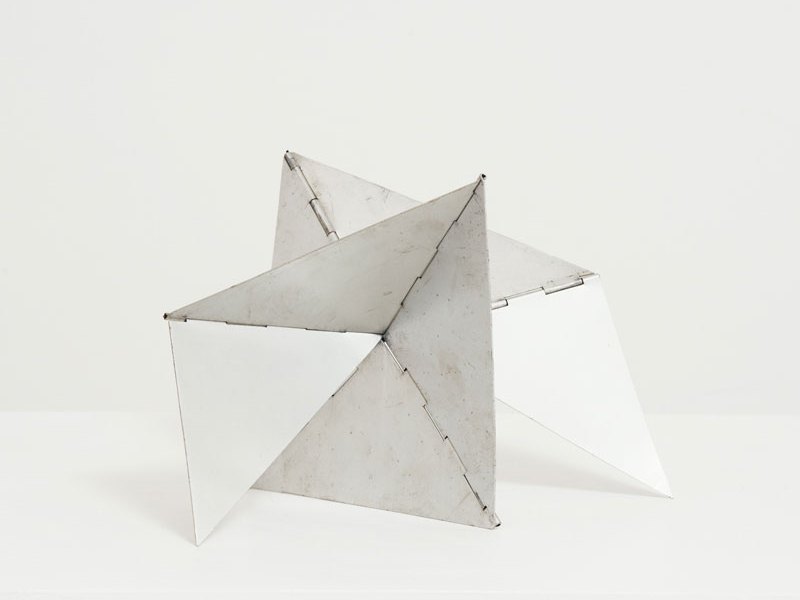
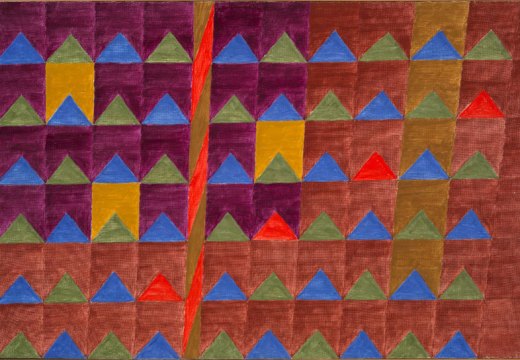
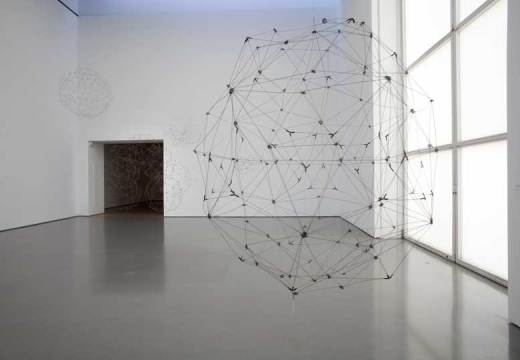
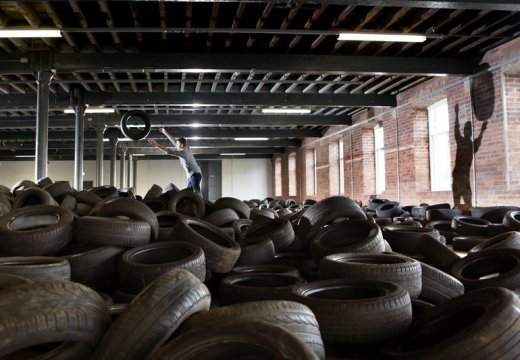









![Masterpiece [Re]discovery 2022. Photo: Ben Fisher Photography, courtesy of Masterpiece London](http://www.apollo-magazine.com/wp-content/uploads/2022/07/MPL2022_4263.jpg)
Why are fathers so absent from art history?